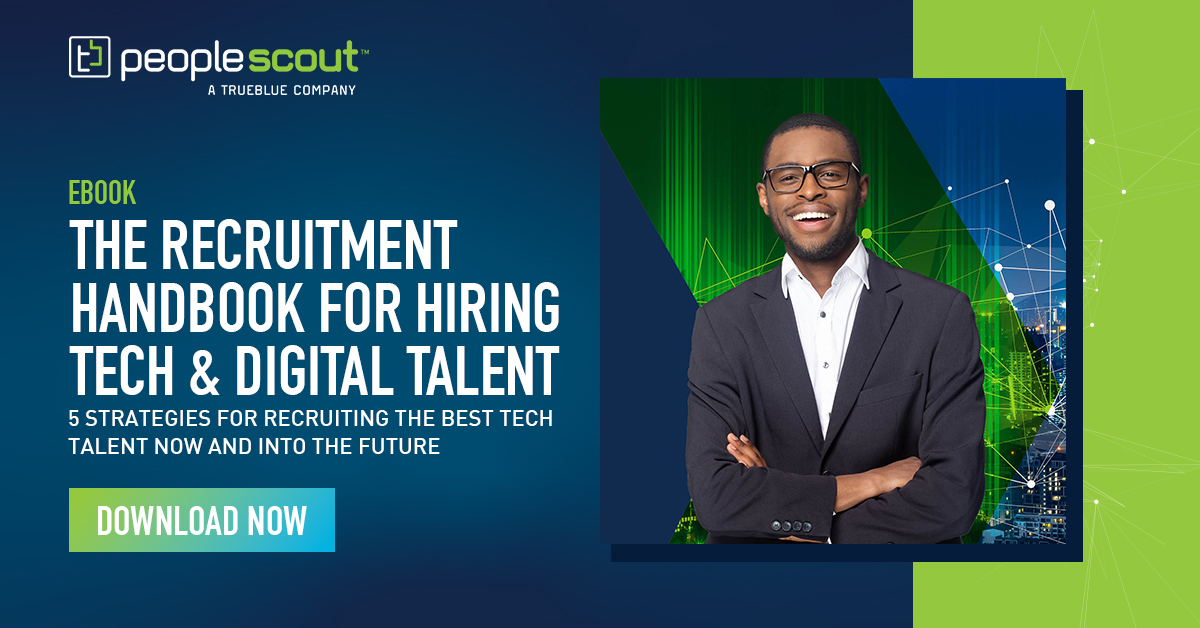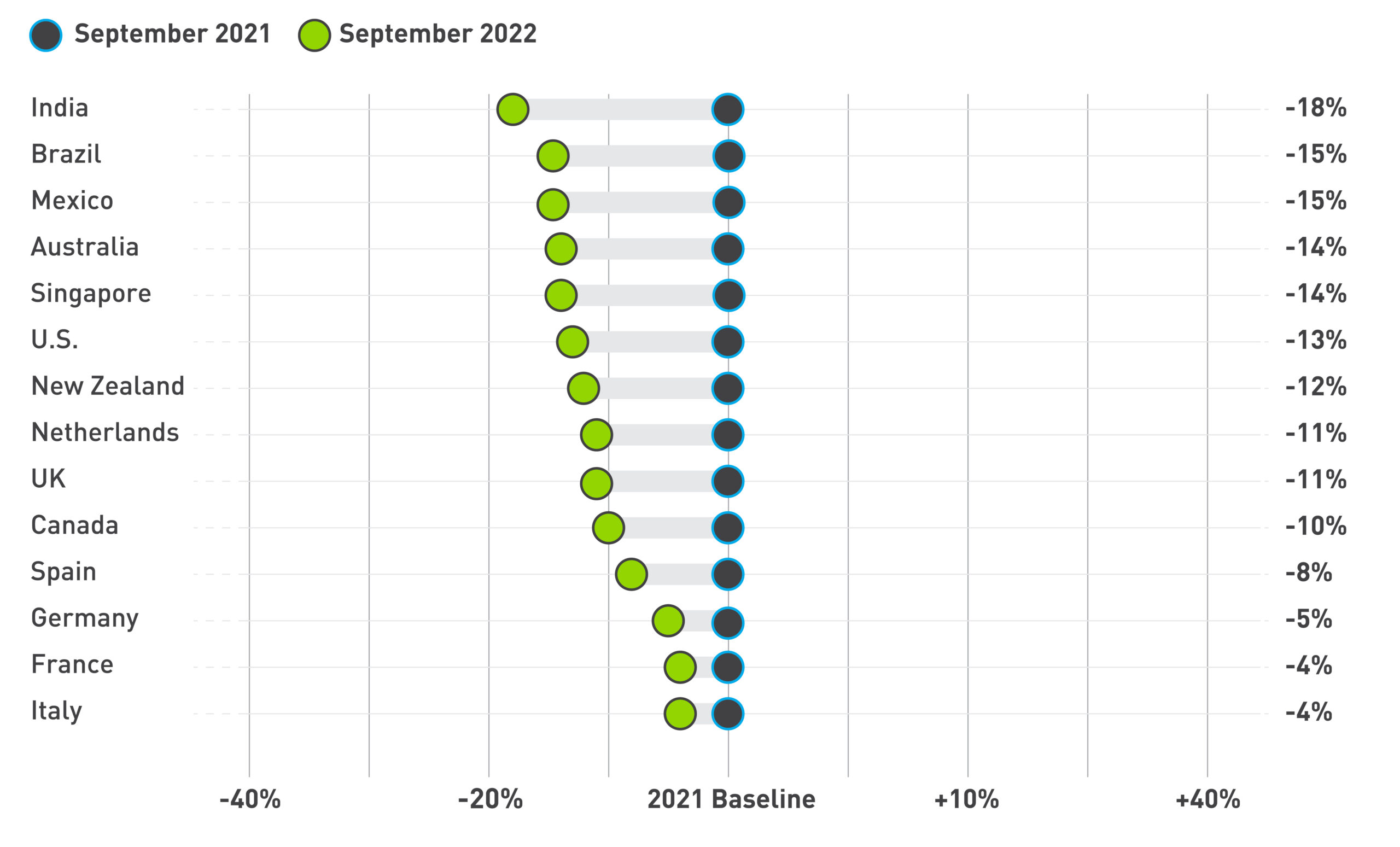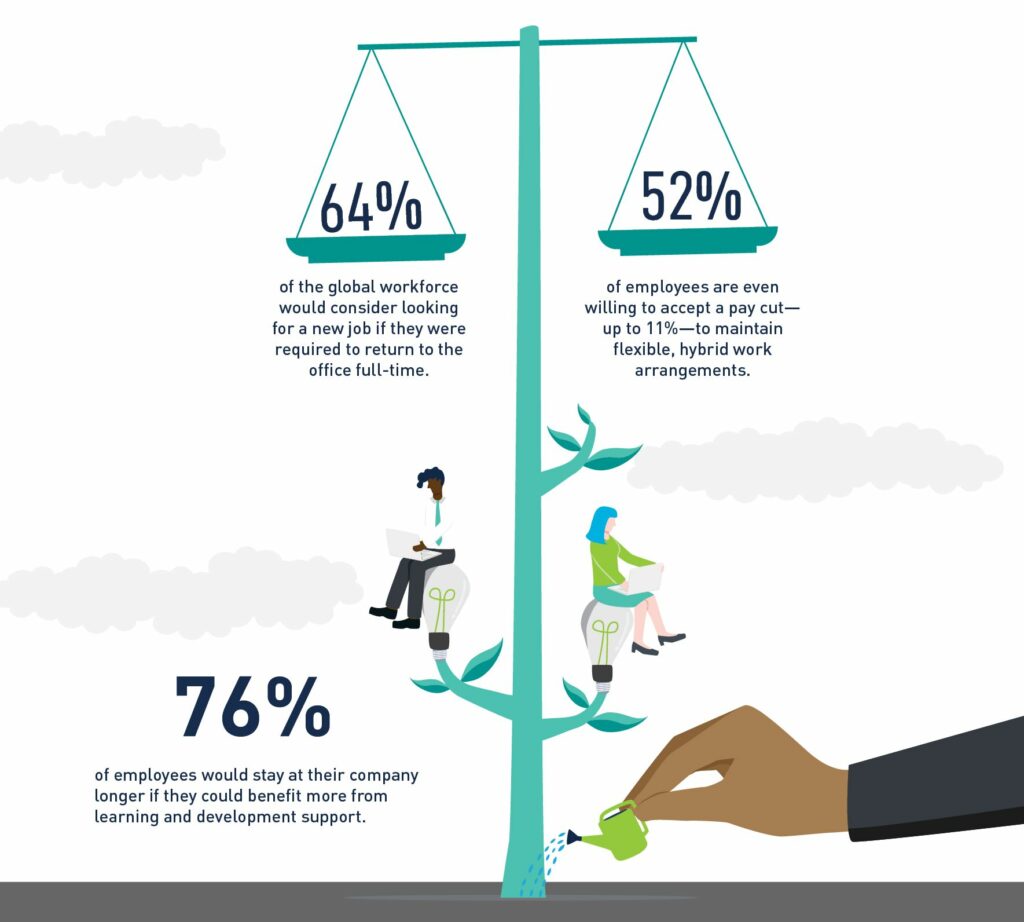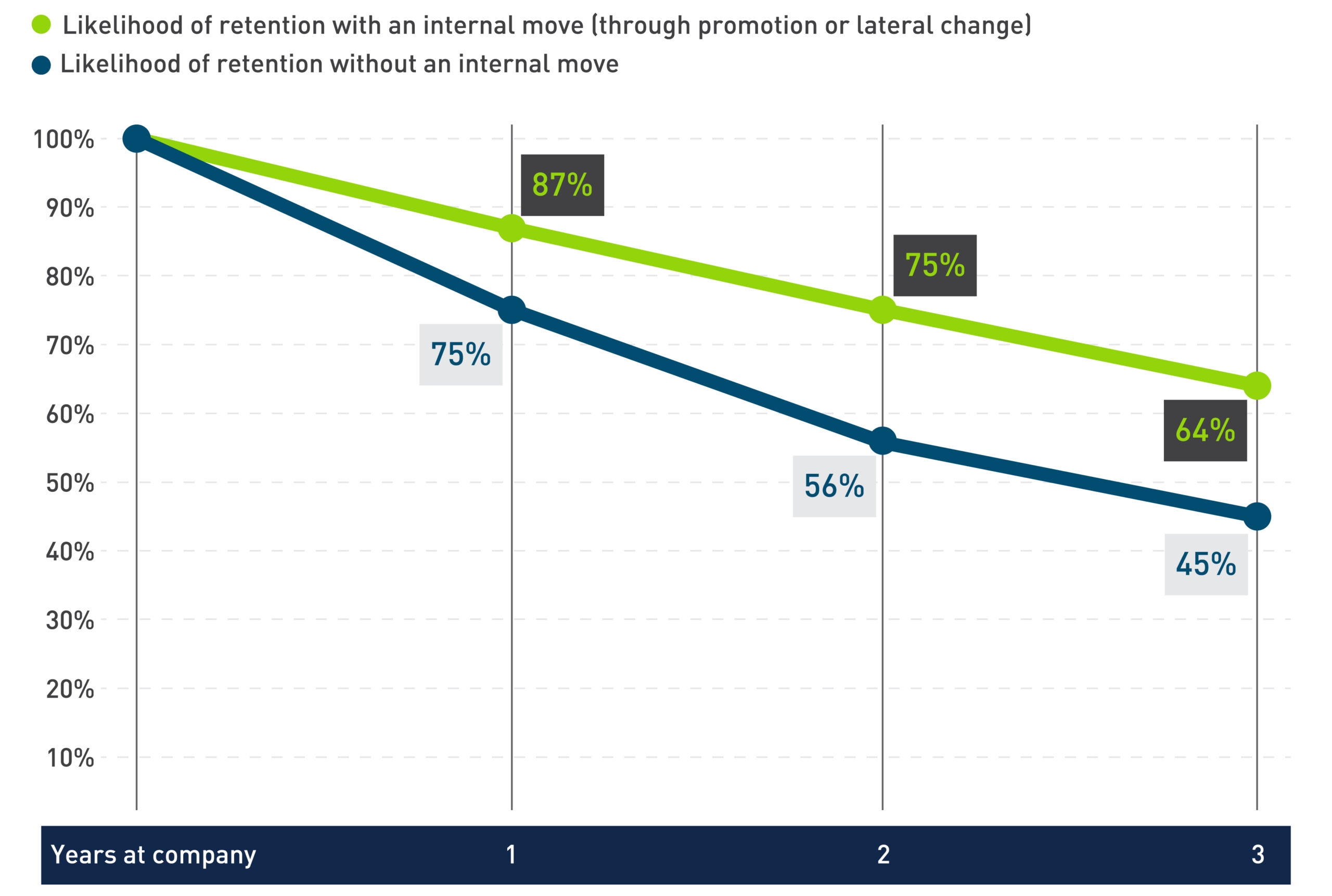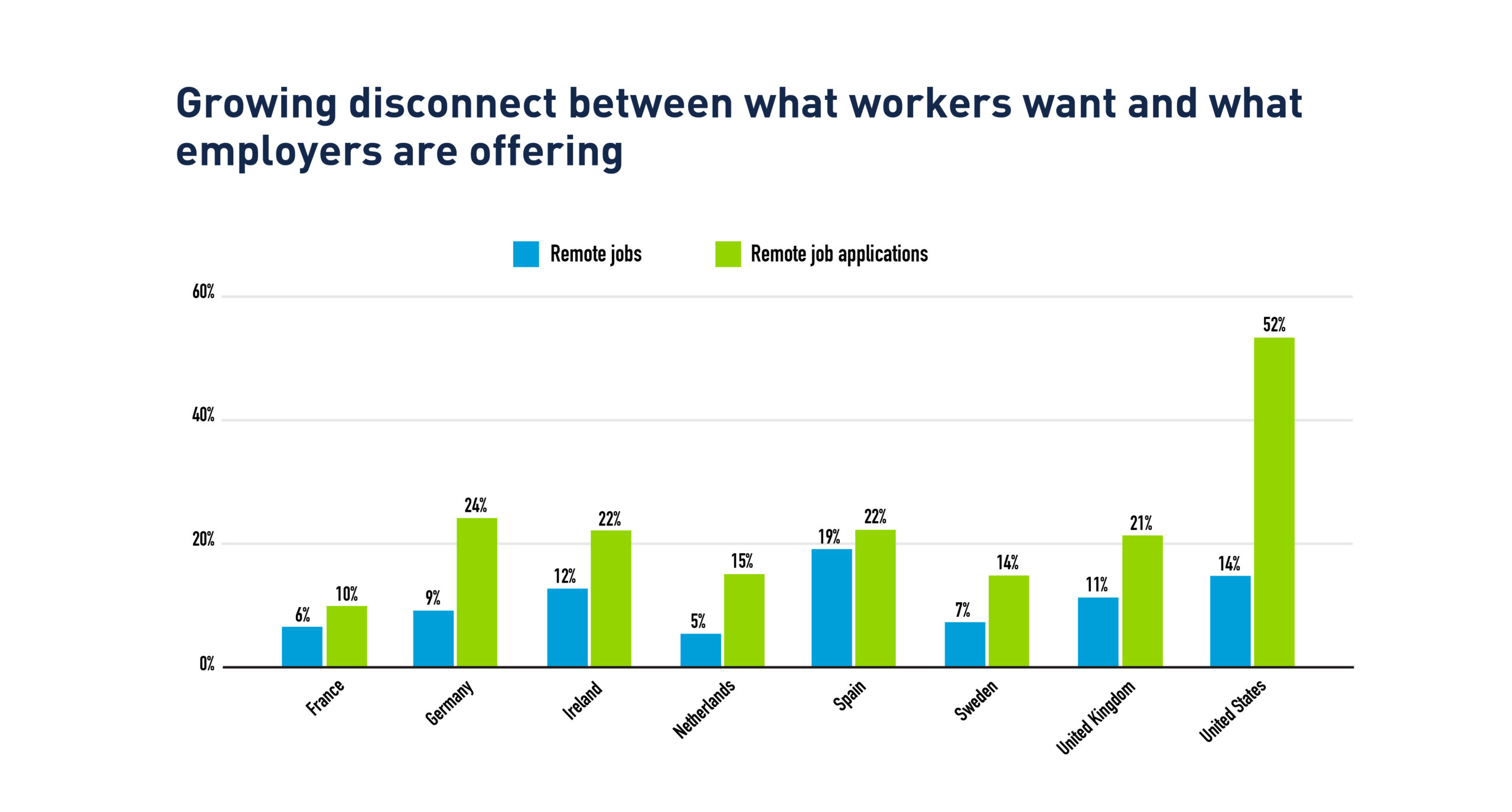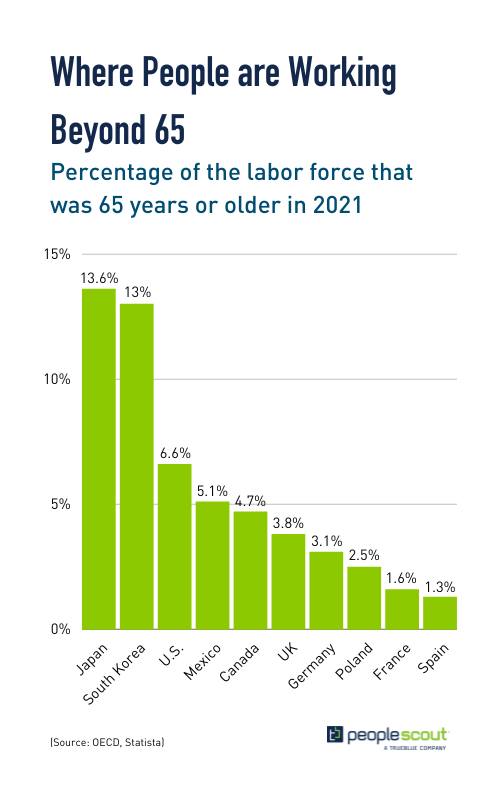In the past three years, we’ve seen a talent market that has shifted more drastically and rapidly than we’ve ever seen. These weren’t the standard economic oscillations that take place slowly throughout many years—rather, this pace of change was something new and required talent leaders to spend the last three years fighting fires instead of focusing on workforce planning.
Now, it’s as important as ever to be more intentional about our strategy as we ask, “What’s next?”
Taking Time to Reflect
As talent leaders, we’re no strangers to the Great Rehire, quiet quitting and the Great Resignation—it seems at every turn, we are learning about a new workforce movement. At PeopleScout, we feel the real value comes not from labeling the next talent trend, but in doing the work to help employers struggling with today’s very real talent obstacles and developing custom solutions to address our clients’ unique talent challenges.
Right now, there is an opportunity to take a look back at everything we’ve learned from our experiences over the past three years and apply those lessons to our talent programs to drive continued success. It’s time to change strategies, rewatch the tapes and recalibrate our approach to meet whatever challenges the future holds.
So, where do we go from here? We step back, take a breath and reflect, then take action by challenging the status quo.
In this article, we’re going to outline many of the different lessons learned, as well as opportunities for you to revitalize your own workforce planning.
The Economic Reality
While the global economic landscape continues to fluctuate, the pace of change has decelerated. In the U.S., most economic indicators give a mixed picture: some companies have made headlines with layoffs, but job growth in other industries has remained strong. What’s more, monthly jobs reports still show strong hiring numbers and economists have seen positive signs around inflation.
At the same time, we’re starting to see a bit of “gas pedal, brake pedal” as talent leaders try to read the tea leaves of the economic picture amid these mixed signals. While employers across some industries are still hiring, the pace has slowed from the height of the Great Rehire.
Globally, we’re seeing the setup for similar environments. In the UK, job vacancies have fallen from their 2022 high, but still remain far above average with a shrinking labor force; however, issues like high inflation, rising wages and worker strikes persist. And, in Australia, the unemployment rate remains at a very low 3.5% and our clients are seeing a tighter applicant pool.
These are certainly challenges to contend with, and the best way to move forward is with a quick glance back.
Opportunities for Adjustment with Workforce Planning
With large variances across countries, regions and sectors, the lessons learned and resulting transformations will depend on how the past three years have affected you.
Here are the five main areas we recommend you prioritize as part of your workforce planning strategy enhancement.
1. Recruitment Process Improvement
The first place to start your recalibration is the recruitment process. Did the pandemic and Great Rehire introduce changes into your process? For example, many employers were forced to shoehorn their in-person hiring process into a virtual one through the pandemic and Great Rehire. If that was the case at your organization, does that process still work, especially for your remote and hybrid employees?
This is one of the biggest opportunities for talent leaders to connect with their teams to understand what worked and what didn’t. Your team members have built up so much knowledge on the ground working through the challenges of the last three years. How can you harness that going forward?
Similarly, take a step back and look at the data you’re using to define success with your recruitment program. Are you hitting your goals, but still feel like something is missing? If so, you may be looking at vanity metrics, as opposed to sanity metrics. There’s always room for improvement; you just need the right data points to identify it.
In this case, consider bringing in a recruitment process outsourcing (RPO) partner. A partner can help with any future scaling up and down as your hiring needs change, but they also provide value in helping benchmark your progress and success. For instance, the most frequent questions we get from clients during our routine business reviews with them are around what other employers are doing. What technologies are out there? What innovations have been made? What suggestions do you have? Without an RPO partner, you miss out on that insight.
2. Employer Brand
There has probably been more discussion about employer brand during the last year and a half than ever before, and this has been driven largely by the change in workforce and candidate priorities. During the Great Resignation, employees left for perceived greener pastures. To that end, it’s important to understand what you did right and where you may have let employees down during the last few years. In particular, there’s an opportunity to talk to the people who stayed with you to understand what kept them at your organization through some difficult years. Then, you can apply those lessons to your employer value proposition. In fact, if you haven’t updated your employer value proposition and employer brand since before 2020, you’re behind the curve.
Outside of the pandemic and recovery, the growing influence of Gen Z in the workplace has also influenced employer brands. Our research shows that Gen Z—more than any other generation in the workforce—says that your mission and values, company culture, and diversity, equity and inclusion initiatives influence their decision to apply. With that in mind, does your employer brand reflect the changing values of the workforce?
3. Candidate Experience
The world has fundamentally changed in the last few years, and so have candidate expectations. Specifically, we’ve seen a shift toward the need for a consumer-like candidate experience in recent years, and it has only accelerated. As consumers, we’ve grown to expect even more convenience. In 2020, many of us expanded our use of services, like grocery pick-up and delivery. We order our coffee with an app so we don’t have to wait as it’s made. Even as the pandemic receded, many of us kept up with these conveniences. Candidates expect a similar experience when it comes to finding and applying for jobs.
In the same vein, when was the last time you evaluated your candidate experience? Have you taken on the task of simply applying for a job at your organization to see the experience through the candidate’s eyes? Did you make compromises in the depths of the pandemic or the chaos of the Great Rehire? Or did you implement tools—like on-demand video interviews or automated text message screenings—and discover that they reduced candidate fall-out? In any case, it’s probably time to recalibrate your candidate experience.
PeopleScout recently released research around candidate expectations and candidate experience best practices. Read our three most important takeaways.
4. Retention
The Great Resignation forced employers to renew their focus on employee retention, and it has definitely had an influence. According to HR Digest, employers that invested in employee development saw a 58% increase in retention in 2022. Beyond employee development, many organizations have also made their moves to remote, hybrid and flexible work permanent.
In 2023, we expect the pace of turnover to slow down for many employers. That’s because the changing economic landscape has left candidates less confident in their job searches, according to CNBC. As such, we anticipate more workers will place greater value on stability after several turbulent years.
As you look at your own program improvements, the employees you retain will be valuable assets as they’ve learned the key lessons firsthand. They’ve stayed with your organization and adapted through the changes of the past several years. They know your company better than anyone. What can you do to provide benefits like work/life balance, professional development and wellness?
5. Optimizing Technology
Finally, take a look at your technology. Many employers quickly added new recruitment technology solutions in 2020 to support remote recruitment during lockdown. If that was the case at your organization, are those tools optimized for your current needs?
When it comes to improving your recruitment program, your technology is one of your most important tools: Your recruitment tech stack likely affects every one of the other opportunities for enhancement that we’ve highlighted. With machine learning and artificial intelligence, we can learn from the history of candidate behavior. The right tools can then help recruiters prioritize interactions with candidates and automate communications to candidates in your recruitment funnel. Similarly, the right technology can also make your recruitment process more efficient; help you more effectively share your employer brand; improve your candidate experience; and provide benefits for current employees. If you’re reevaluating your talent acquisition strategy, technology needs to be a part of the conversation.
Lessons Learned
During the last three years, many of us have spent so much time dealing with the present that there hasn’t been an opportunity to think about the future. That said, we have learned the value of scheduling time to focus on what’s next; over and over again, we’ve seen the importance of being nimble. With that in mind, we’re encouraging our clients to think about the elements discussed above and identifying ways that PeopleScout can help them meet their talent needs. So, I urge you to take the time to think about how you can adjust your talent program for whatever the future brings.
